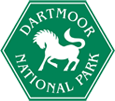Land Management
The Dartmoor landscape is characterised by wide open areas of moorland, broken in places by the jagged outcrops of tors, and surrounded by enclosed farmland and wooded valleys, making a historic and living tapestry.
For over 5,000 years farming has been the main land use on Dartmoor. Working and re-working the land, farmers have created and maintained a large part of the Dartmoor landscape. Today over 90% of the land within the National Park boundary is used for farming. Much of this area is moorland, both open and enclosed, where livestock is grazed, and the remainder is made up of fringe enclosed farmland which mainly comprises improved grassland. In addition, rivers, woods, shelterbelts, wetlands, rough pasture, traditional buildings and archaeological features all contribute to the character.
Our land management role
The National Park Authority’s duties and purposes are set down by Government legislation. These are to conserve and enhance the natural environment beauty, wildlife and cultural heritage; and to promote opportunities for the understanding and enjoyment of the area’s special qualities. In pursuing these purposes the Authority has a duty to seek to foster the economic and social well being of the local community.
Land within the National Park is not nationally owned, as in many other countries. All land within the National Park is privately owned. On Dartmoor there are a few major landowners such as the Duchy of Cornwall, South West Water and Forestry Commission, but the rest is owned by a myriad of small landowners. The National Park Authority is also a small landowner, owning land at Haytor Down, Holne Moor and Plaster Down as well as other smaller sites. The National Park Authority works to influence land management through partnership and agreement with landowners, farmers and commoners.
The National Park Authority’s own land ownership includes 1,231 hectares of moorland, 198 hectares of woodland, and a Devon longhouse called Higher Uppacott.
For more information about land management issues, and working partnerships follow the links to:
